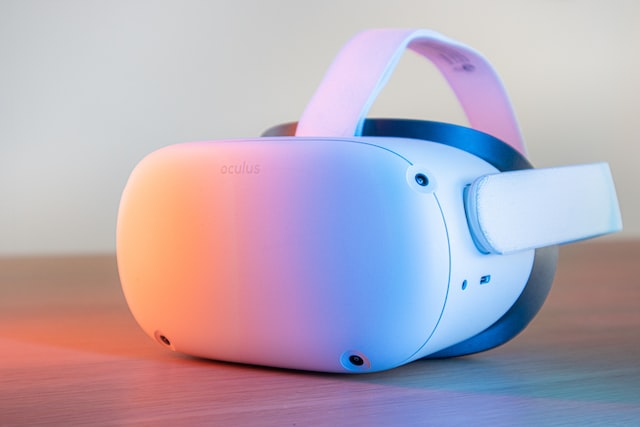
Virtual reality gaming is, by no means, a new concept. The earliest attempts at creating VR content took place in the middle of the 20th century, though they were primitive and lacked many of the features we would consider essential today.
The first real attempt at a dedicated virtual reality gaming device was Nintendo’s Virtual Boy, which went on sale in 1995. However, it, too, lacked many of the features to create a truly enjoyable VR gaming experience.
The Virtual Boy had monochrome red and black wire-frame graphics, which, while not too far away from the black and green visuals of the Game Boy, looked like Stoneage in comparison to the new 3D graphics of contemporary (but now retro) gaming machines. It also lacked head tracking, instead requiring players to strap their heads into a table-mounted setup and sit at an awkward angle for the entire time they played.
With these glaring problems, this machine was poorly received by almost everyone, so it was quickly removed from sale.
Realizing that the Virtual Boy was an idea well ahead of its time, most gaming companies stayed away from the concept for the best part of two decades. However, with the release of more modern consumer headsets by the likes of HTC, Sony, and Meta, things have changed.
But does that mean VR gaming really has a future or is it just a passing fad that will fizzle out in the same way that 3D televisions and games like Guitar Hero did?
Current Demand
Demand does exist for VR gaming. As of the summer of 2022, analysts estimate the Meta has sold around 15 million units of its Quest 2 headset, making it more popular than the Xbox Series X/S.
As of December 2020, Sony has sold over five million units of its PlayStation VR add-on for the PlayStation 4, an impressive achievement given that it’s limited to only people who already own a PS4. Interest in the new PS VR 2 has also been high, thanks to the wealth of new features and gaming opportunities that it offers.
With this in mind, it’s clear that there is definitely demand for VR hardware, and the PS VR, in particular, demonstrates that much of this is for gaming. However, this doesn’t necessarily confirm a long-term future for virtual reality gaming, as it could be a novelty like other non-traditional forms of interacting with games.
Successful Software
While hardware sales don’t necessarily indicate longevity for VR gaming, we can see this from software. On marketplaces like the Oculus Experiences store and Steam, there is a mix of established and new genres proving popular.
The VR games that are the most successful tend to be ones that don’t require too much movement through a map. Those that do have this, such as first-person shooters, tend to induce motion sickness in players, which is not a good quality for a video game.
Instead, some of the more successful VR games are ones that allow the player to remain in one place but then move and look around on the spot. One popular example of this is PokerStars VR, a virtual reality card room that involves players sitting at a themed table to play one of several variants of poker. It includes many of the same features seen in the mobile and desktop versions of PokerStars, including multiple game types, a list of variants, and different table aesthetics but in a more immersive format.
Beat Saber is another popular VR game that is fun while not inducing motion sickness. It requires players to stand on the spot and use their hands to chop cubes to the beat of a song, providing more of a workout than games like PokerStars but from a static position.

Overcoming Motion Sickness
While games like PokerStars VR and Beat Saber have proven that games designed to avoid motion sickness can be incredibly popular, this technical and physiological challenge does need to be overcome for VR gaming to have any chance of longevity.
Otherwise, the most hardcore gamers that enjoy fast-paced shooting and racing games are going to be put off by the fact that their favorite titles make them feel like they’ve spent a week on a pirate ship in a storm.
It does appear possible. Meta’s latest hardware, the Quest Pro, uses a small gap in the “facial interface” to allow some light in from the outside, with many users commenting that it helps.
Therefore, with a lot of demand already and plenty of prospects for improvement, VR has a strong chance of success in the future.










